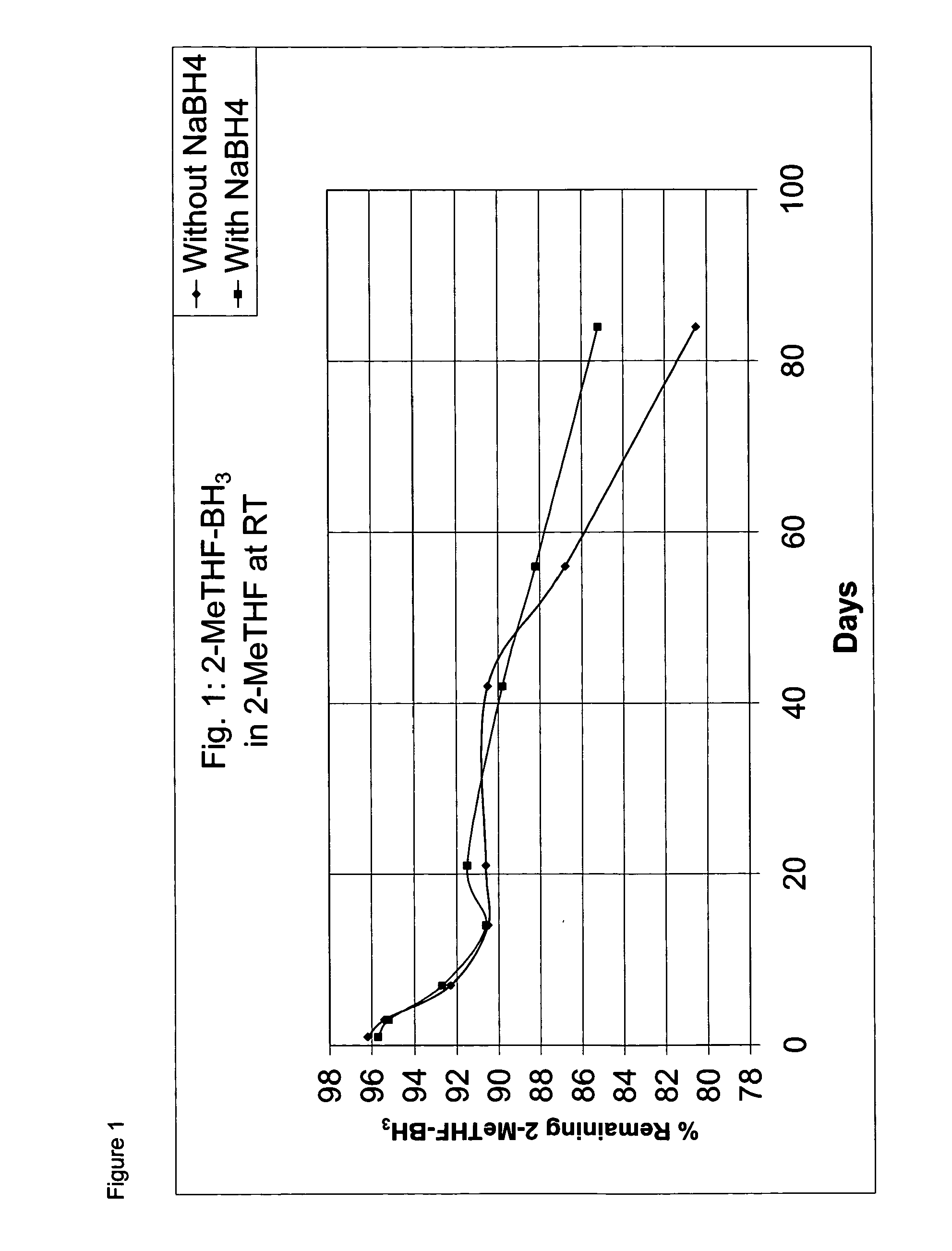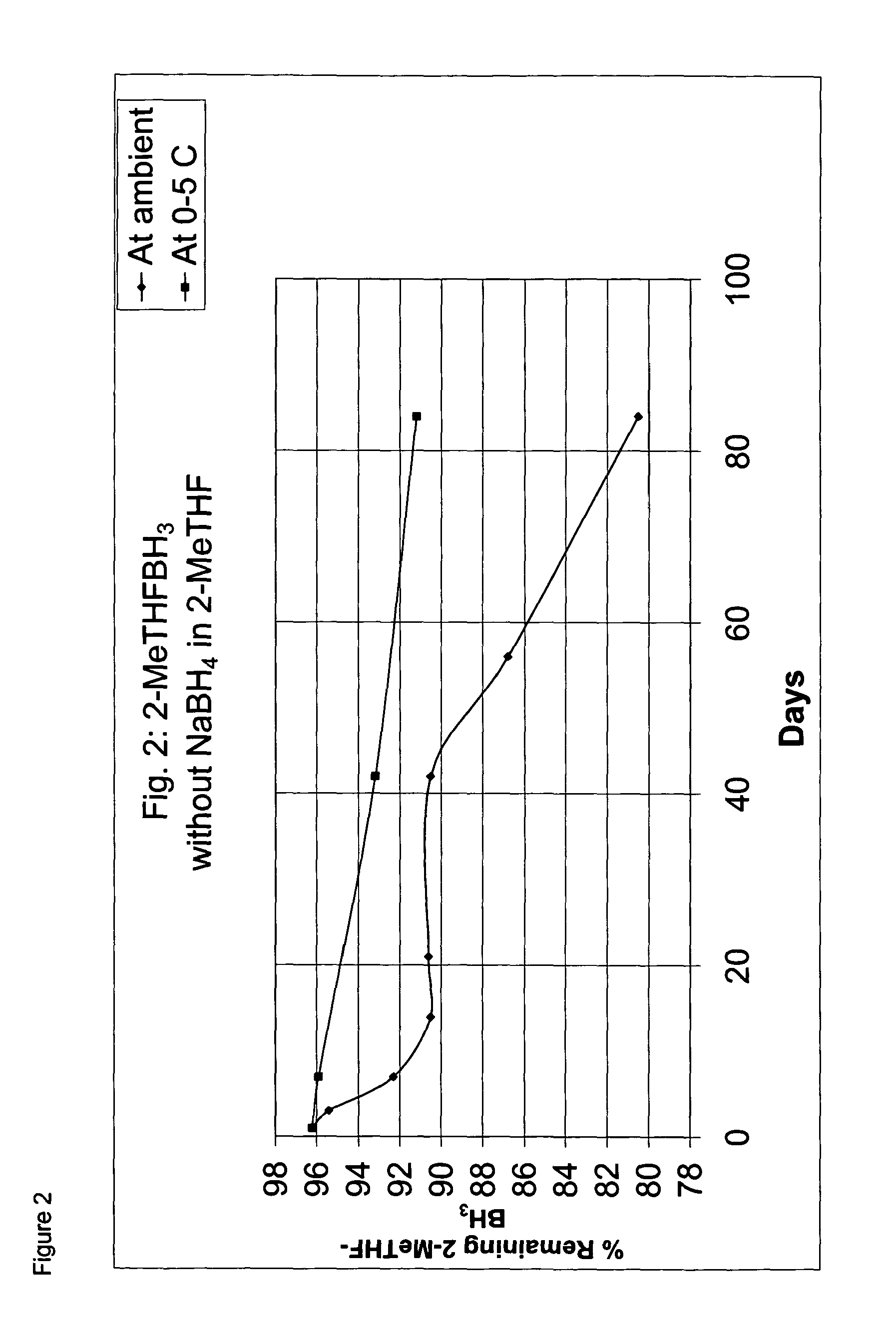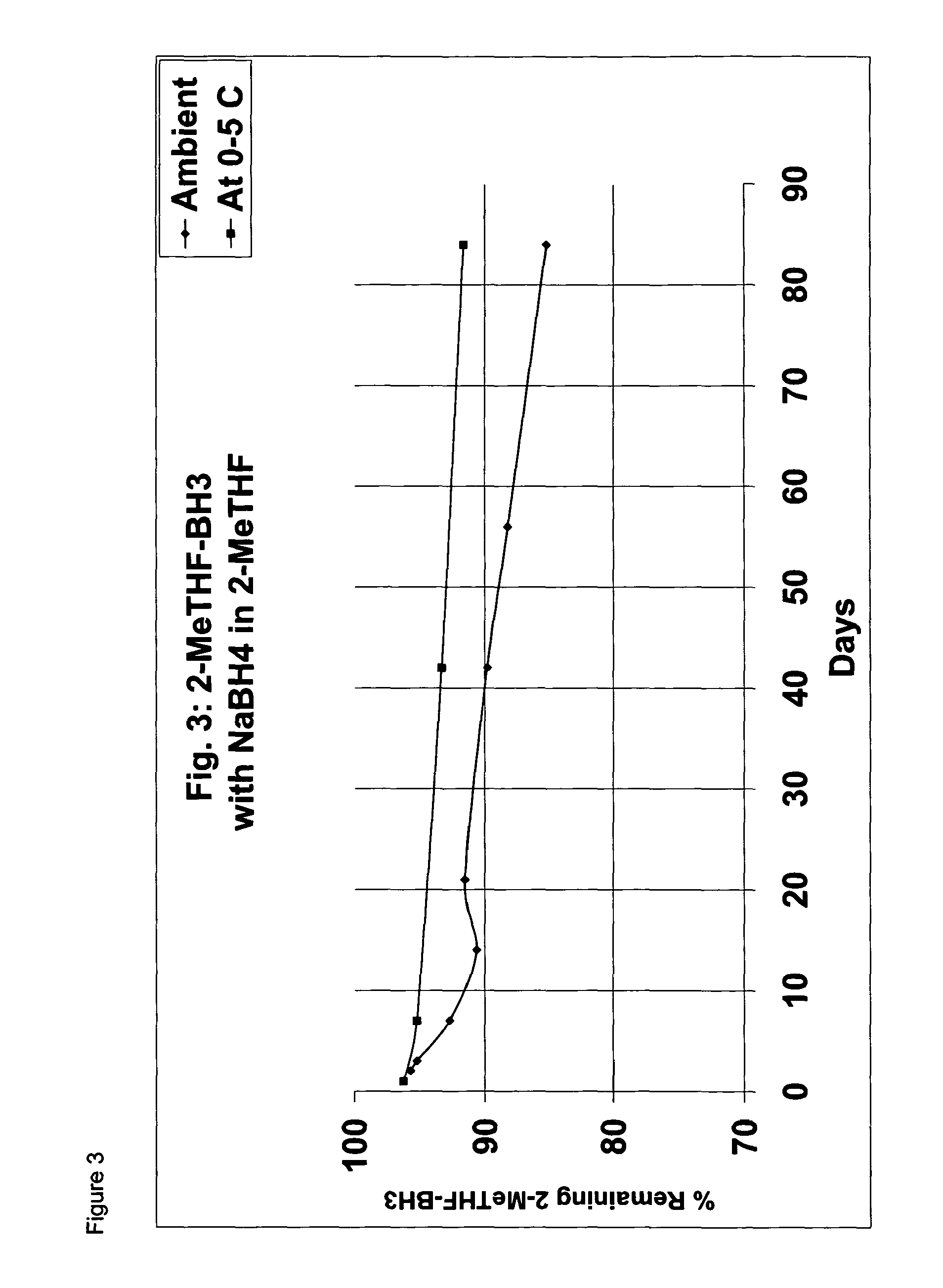Borane ether complexes
a technology of borane ether and complexes, which is applied in the preparation of amino compounds, group 3/13 element organic compounds, other chemical processes, etc., can solve the problems of inherent disadvantages of borane reagents, and high concentration of sulfide boranes, so as to reduce flammability hazards, less polarity, and high boiling point
- Summary
- Abstract
- Description
- Claims
- Application Information
AI Technical Summary
Benefits of technology
Problems solved by technology
Method used
Image
Examples
example 1
Synthesis of Borane Complex of 2-Methyltetrahydrofuran
[0052]A glass reactor was purged with nitrogen and charged with 422.6 g of 2-methyltetrahydrofuran (distilled from potassium). The content of the vessel was cooled to 0° C. The back-pressure regulator of the reactor was set at 4400 mbar. Diborane (8 g) was bubbled into the reactor over a 40 minute period of time. The reactor temperature reached a maximum of 4.5° C. and a head pressure of 1400 mbar. Upon completion of the diborane addition, the reactor solution was allowed to stir overnight. The 11B NMR spectrum showed a quartet at δ=−1.2 ppm (95%, 1J(11B,1H)=106 Hz) assigned to the product and a second signal at δ=18 ppm (5%, singlet) assigned to a borate impurity. The density of the solution was 0.848 g / ml at 22° C. and the borane concentration 0.88 M.
[0053]The solution was then divided into two halves. The one half of the solution was stabilized with NaBH4 (0.05 g). After the addition of the NaBH4, the solution was stirred for ...
example 2
Synthesis of Borane Complex of 2-Methyltetrahydrofuran
[0054]A glass reactor was purged with nitrogen and charged with 430 g of 2-methyltetrahydro-furan (Aldrich, used as received). The content of the vessel was cooled to 0° C. The back-pressure regulator of the reactor was set at 4400 mbar. Diborane (10 g) was bubbled into the reactor over a 37 minute period of time. The reactor temperature reached a maximum of 4.6° C. and a head pressure of 1700 mbar. Sodium borohydride (0.09 g) was added to the solution. The 11B NMR spectrum showed a quartet at δ=−1.0 ppm (95%, 1J(11B,1H)=106 Hz), borate at δ=18 ppm (4.5%, singlet) and a trace of NaB3H8 at δ=−26 ppm. The density of the solution was 0.848 g / ml at 22° C. The borane concentration was 0.94M.
example 3
Synthesis of Borane Complex of 2,5-Dimethyltetrahydrofuran
[0055]Diborane (0.2 g, 14 mmol of BH3) was added to a sample of 2,5-dimethyltetrahydrofuran (4.9 g, 5.9 ml) in a flask in an ice bath. The 11B NMR spectrum of the mixture clearly showed the borane complex of 2,5-dimethyltetrahydrofuran (62%) at δ=−1.5 ppm (q, 1J(11B,1H)=104 Hz) and also dissolved diborane (24%) as a multiplet at δ=17.9 ppm (1J(11B,1H)=120, 60 Hz). The amount of dialkoxyborane initially formed was about 14% (δ=28 ppm, d, 1J(11B,1H)=104 Hz). The excess diborane was not purged and the sample was kept at 0° C. Monitoring the sample over 6 days at 0° C. showed relatively little change with the complexed borane maintaining at about 60% by 11B NMR. The sample was then left at ambient temperature to monitor ether ring-opening, see FIG. 6.
PUM
| Property | Measurement | Unit |
|---|---|---|
| temperatures | aaaaa | aaaaa |
| flash point | aaaaa | aaaaa |
| flash point | aaaaa | aaaaa |
Abstract
Description
Claims
Application Information
 Login to View More
Login to View More - R&D
- Intellectual Property
- Life Sciences
- Materials
- Tech Scout
- Unparalleled Data Quality
- Higher Quality Content
- 60% Fewer Hallucinations
Browse by: Latest US Patents, China's latest patents, Technical Efficacy Thesaurus, Application Domain, Technology Topic, Popular Technical Reports.
© 2025 PatSnap. All rights reserved.Legal|Privacy policy|Modern Slavery Act Transparency Statement|Sitemap|About US| Contact US: help@patsnap.com



